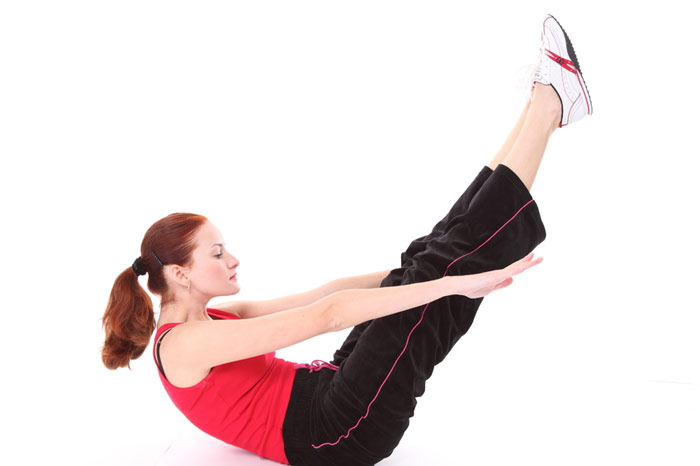Many of us think that performing crunches (lifting the body from a prone position) is the best way to achieve the ideal abdomen. BBC Future observer found out if this is really so and if this exercise can do harm.

If you do not enjoy crunches, we have good news for you. Scientists doubt both the efficiency and usefulness of this exercise.
Does it really help get the cherished six-pack? Or maybe a flat belly is the result of proper nutrition and physical activity in general?
The analysis of all the research on abs workouts shows that they help improve flexibility and muscle strength.
The study on dogs revealed that back curling helps to supply spinal discs with nutrients and preserve the spine’s flexibility.
That sounds good. But to get a sculptured abdomen, you will have to sweat a lot.
In 2011, researchers conducted a small randomized study in Illinois.
One group of participants did crunches on a daily basis, while the others, the lucky ones, did not do anything.
After six weeks, the researchers made accurate measurements and did not reveal any changes in waist circumference and the amount of abdominal fat.
Some people are genetically predisposed to back pain caused by crunches.

The rise of the body from a prone position is often included into athletic workouts – this way you can improve core stability.
However, researcher Thomas Nesser at the State University of Indiana is convinced that core stability does not guarantee the best sports achievements.
Let us drop the subject of whether crunches help achieve good physical shape. Could this exercise lead to undesirable consequences, such as back pain?
Stuart McGill, a professor of spine biomechanics at the University of Waterloo in Canada, has been examining abdominal exercises for many years. He is convinced that traditional crunches can be harmful to health.
The researcher experimented on pigs. He bent them, imitating human movements during a crunch. After many hours of “training,” he examined the spinal disks and found strains in the flexion area.
If the same processes occurred in humans, it would lead to a pinched nerve, back pain and even spinal disc herniation. Pigs were chosen for this experiment because, as compared to other animals, their backbone structure is most similar to the human.
Nevertheless, we cannot agree with those criticizing McGill’s research – they say that there’s too much difference between a man and a pig to take the results seriously.
Experiments on pigs have shown that bending the spine occuring during a crunch can lead to back pain.
However, during the experiments, the pigs’ spines were bent thousands of times in a row. And people usually make breaks even during the toughest workouts. Usual sets of 15 reps can hardly cause any significant harm.
However, injuries cannot be excluded. A 2005 study at the Fort Bragg military base in the USA showed that 56% of all injuries during military tests on physical training were caused by crunches.
As it turned out, the same ab exercises may have a different impact on different people. Someone can do 30 repetitions a day for many years, and some cannot. Sometimes it is difficult to determine, which group you belong to, because it may depend on the genes.
According to a study, most of the problems are caused not by the intensity of exercise, but by genetic factors that are responsible for three-quarters of back pain cases related to crunch performing.
In the course of the study, entitled The Twin Spine, scientists watched a few pairs of twins in Finland, Canada and the United States – starting from 1991.
How to get a six-pack without health consequences?

They found out that the propensity to the intervertebral discs diseases is largely due to genetics. Even if one of the twins was engaged in hard physical work and the other lead a sedentary lifestyle, the incidence of back problems was about the same.
So, abdominal exercises can cause back pain, but not in all people. Nevertheless, this is a good reason to abandon them.
But how to get a six-pack without health consequences then?
Professor Stuart McGill recommends placing your hands under your lower back to reduce the load while performing crunches. Bend one knee and straighten the other leg. Then, from a prone position, gently lift your head and shoulders off the ground.
McGill suggests that you should imagine your head is on the floor scales, and you need to lift it up just enough for the scales to show zero.
This exercise is described in detail in his book, “Back Mechanic”.
Bret Contreras from the Auckland University of Technology recommends doing no more than 60 crunches per set. In his opinion, it is better to start with fifteen repetitions and gradually increase this number.
Finally, you should keep in mind that the risk of injury increases if you perform exercises right after having spent a lot of time lying or sitting. So do not rush to work on your abs after hours of sitting in front of the computer. No less harmful are the exercises performed right after getting out of bed.










